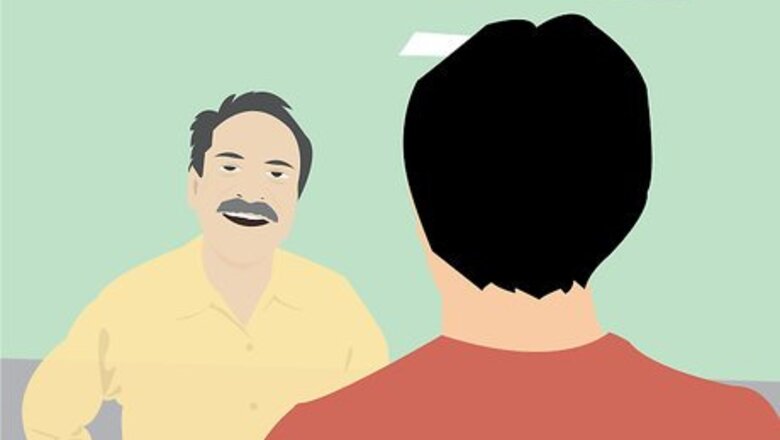
views
Installing the Cover Rails

Confirm the cover is compatible with other parts. Bed liners, bed rail caps, and other additions can be incompatible with some covers. Check with the tonneau cover manufacturer if possible, or follow these rules of thumb: If a bed liner gets in the way during installation, just cut a notch where you need to fit a clamp or other cover part. If the bed liner wraps over the rails and your tonneau cover lies between rails (instead of above them), the two parts might not both fit on your truck. Most bed rail caps won't affect installation, but diamond plate bed rail caps will prevent some covers from fitting, or from forming a weather-tight seal.

Open the tailgate. A closed tailgate can interfere with installation.
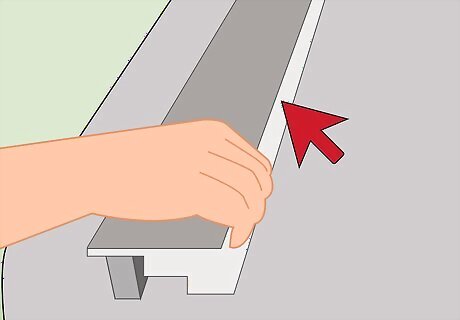
Position a side rail loosely onto the bed rail. Most tonneau covers come with two side rails, which fit onto the top or side of the truck's bed rails. Place a side rail flush with the front of the bed rail, next to the cab. Hold it in place temporarily with a spring clamp, or have an assistant keep hold of it. If your cover does not come with rails, the cover itself should have clamps that swing down from the underside once the cover is in place. These covers are less stable and not weatherproof, but easy to remove and reinstall. If you have a retractable tonneau cover, which comes in a canister, you may need to position this before you place the rails. Put the canister on the edge of the bed rails, next to the cab. Center this perfectly before you attach the rails to the canister.
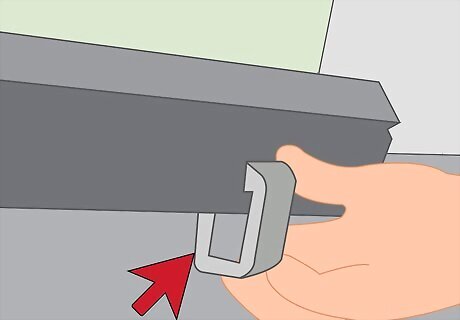
Clamp the side rail in place next to the cab. Your installation kit should come with several toothed clamps. Take one of these and fit it onto the underside of the side rail, near the cab. Line up the teeth of the clamp with the grooves, then tighten by hand. Tighten a few times with a wrench or socket wrench, just enough to feel it pressing against the bed rail.
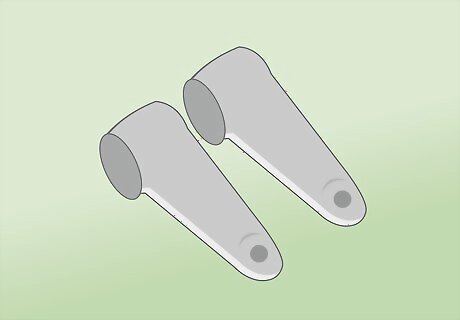
Add shims if necessary. Look at the underside of the rail. If there is any gap at all between the truck, place shims evenly along the bed rail to close the gap. These are plastic or rubber spacers that stick directly onto the bed rail. If there's a large gap (more than about ⅜ inches / 10mm), you might need shim brackets instead. Unclamp the rail, slide the shim brackets onto the end, space them out evenly, and reclamp the rail. Your kit may not come with shim brackets, or may have shim brackets that attach with a slightly different design.
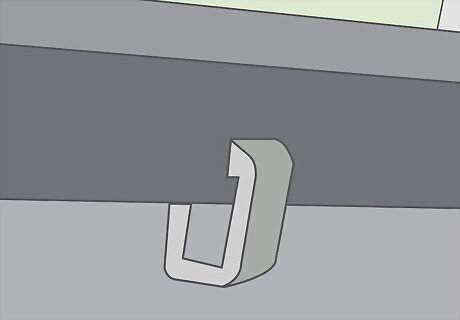
Place additional clamps. Most installation kits come with eight clamps (four per side), but a short bed may only require six (three per side). Attach these the same way you did the first clamp, spacing them evenly along the rails. Some soft tonneau cover instructions recommend skipping this step until the end, so you can make final adjustments more easily. Don't try this for a hard cover, which needs a firm
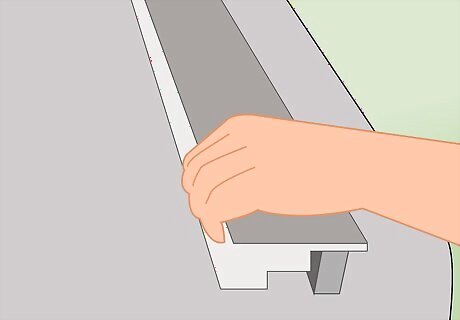
Repeat with the second rail. Install the second rail the same way.

Adjust rails until centered and flat. The two rails should be perfectly parallel with each other, in line with the bed rails, and as far back as they can go. If necessary, loosen the clamp slightly and adjust the rails, then reclamp. If a rail is tilted, lower or raise the position of the clamp, or push down on the raised end of the rail while tightening the clamp. Take your time over this step. The cover will not install properly if the rails are out of position. If there is a gap between your bed rails and the cab, the side rails should not extend into this gap. The rails will not necessarily be level with the closed tailgate.

Tighten all clamps fully. Once you are certain the rails are properly align, finish tightening the front clamp of each rail with a wrench. Repeat with the other clamps, moving toward the rear of the truck.
Installing the Cover
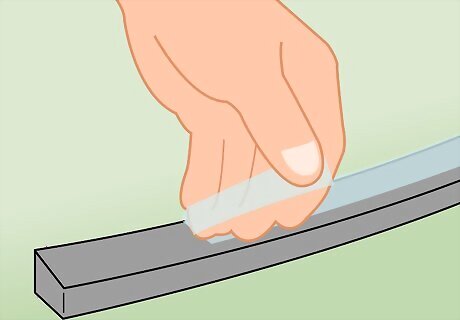
Install rubber seals if included. Weatherproof covers should come with a rubber seal to fill the gap between the cover and the cab. Wipe down this area with rubbing alcohol to make a good bonding surface. Peel off the backing paper and stick it onto the cab between the two side rails, starting from the driver's side. Cut off the excess and discard. Some tonneaus come with additional seals for the sides or tailgate, and/or larger corner plugs to weatherproof the rear corners.

Check for additional components. Some installation kits have components that may be easier to install before you position the cover. Check your kit for the following: Storage straps, fed through holes in the cover. Tension adjuster screws, for hand tightening of the cover. These usually attach to the side rails, and may come pre-installed. Hinged covers and some hard folded covers include a rod to prop the cover open. This should snap or screw into place somewhere on one of the side rails, with the other end resting on a small cradle.
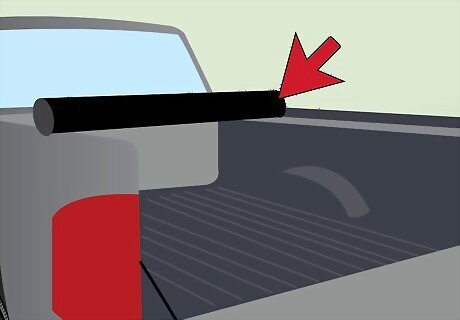
Position the cover over the rails. This will be much easier with two or more people, especially if the cover is a hard cover or your truck is lifted. Place the rolled or folded cover at the end of the rails, next to the cab. It should fit perfectly onto the rails, although you may need to push down to get it in place. This must be perfectly centered and slotted onto the side rails before you continue. If you cannot center the cover, place it back on the ground and readjust the rails. Hinged hard covers (one solid piece without folds) are extremely heavy. They cannot be installed safely by a single person. Use a forklift or several helpers.
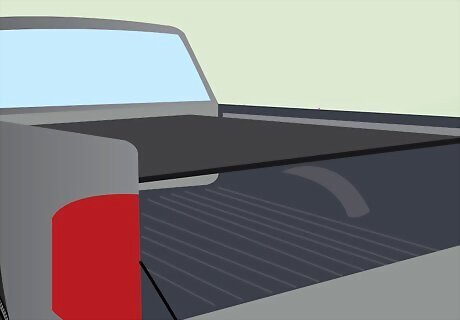
Unroll or unfold the cover. Shut the tailgate. Carefully unroll or unfold the cover until it reaches your tailgate, keeping it in the rails along its whole length. Make small adjustments to cover positioning until it is flush with the tailgate and the cab end of the side rails. Look for a small hand-tightened screw on the rail to adjust cover tension. It should lie taut across your bed, completely covering it.

Bolt the cover onto the rails. Depending on your model, the cover may have already snapped onto the rail as you unfolded it. Most covers also come with elevator bolts or other large bolts for additional securing. Align the bolt holes on the cover with the bolt holes on the side rails, and tighten securely with the washers and nuts included in your kit. Some covers have clamps or levers on the underside, which lower to brace the cover against the bed side.

Tighten all clamps. Check all clamps on the cover rails and tighten them securely. Check all other attachment points to make sure the cover is firmly in place and cannot shift or come loose.

Install final components. Some tonneau covers come with drainage tubes to divert rain, bump stops to protect your cab from dings when a hard cover is opened, or various other optional components. If you have any parts you cannot identify in your installation kit, contact the manufacturer or a mechanic.













Comments
0 comment